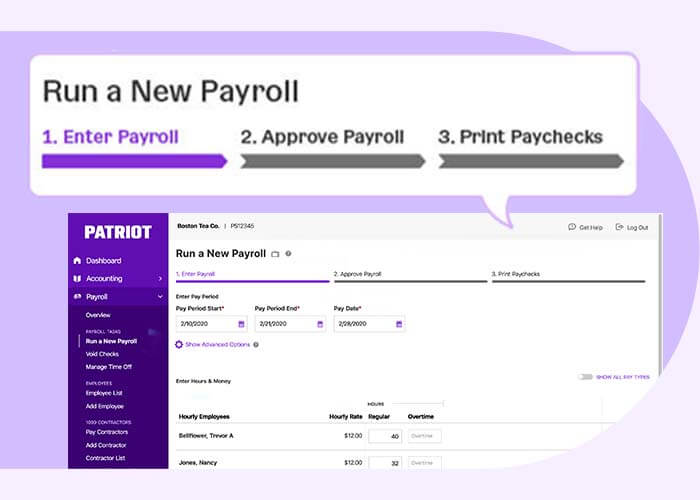Only 44% of custodial parents receive the full amount of child support. And when a parent doesn’t voluntarily meet their child support obligations, employers might be involved in the child support process.
According to the U.S. Department of Health & Human Services, 75% of child support payments are collected through child support withholding. As an employer, you may have to withhold child support from an employee’s wages at some point.
What is child support withholding?
Child support withholding is a court-mandated payroll deduction. You will receive a withholding notice if you are required to make child support deductions from an employee’s wages. Typically, an employee’s disposable income is used to determine the limits of child support deductions.
If a noncustodial parent has an unpaid child support debt and is your employee, a court or child support agency will send you an Income Withholding for Support (IWO) order.
You cannot terminate an employee because of child support withholding. The Consumer Credit Protection Act (CCPA) protects employees whose wages are subject to garnishments for one debt. However, the CCPA does not protect employees with two or more garnishment orders.
The Income Withholding for Support (IWO) form tells you which employee to withhold wages from, how much to withhold, and how to send payments to the appropriate state disbursement unit (SDU).
Verify that the IWO has the correct expiration date, is unaltered, has all the necessary information, and lists withholding amounts as dollars. If you have any doubts about the IWO, contact the sender.
Once you receive an IWO, you should withhold child support as soon as possible. Most states require that you start withholding no later than the pay period beginning 14 days after the agency mailed the IWO.
You will face penalties if you don’t withhold child support after receiving an income withholding order. You might be liable for the amount of the child support plus penalties and fines.
Do not stop withholding child support if your employee asks you to. If the employee disagrees with the child support withholding notice, they must contact the court or agency that issued the IWO.
Most states allow you to charge the employee an administrative fee for withholding child support. However, you cannot charge more than your state’s limit. Withhold the administrative fee from the employee’s wages, not from their child support payment.
How to deduct child support from payroll
You must withhold child support payments each pay period. But, a child support deduction from paycheck isn’t the only thing you withhold.
Employee wages are subject to mandatory deductions. You must withhold federal, state, and local income taxes; Social Security and Medicare taxes; state unemployment tax, if applicable; and any other deductions determined by state law.
Is child support a pre-tax deduction? No, child support is not a pre-tax deduction. You must withhold child support after you withhold taxes.
Because most child support orders are based on disposable net income, you need to know how to calculate the employee’s disposable income. Disposable personal income is what is left after you subtract mandatory deductions from the employee’s gross pay.
Disposable Income = Gross Pay – Mandatory Deductions
Keep in mind that disposable income is different than net pay, which is the employee’s take-home pay. Net pay might include other deductions, such as retirement plan contributions and health insurance premiums.
Before you can deduct child support from the employee’s disposable income, you need to understand CCPA rules.
CCPA limits: Child support
You can only deduct up to a certain amount of an employee’s disposable income for child support withholding. The CCPA sets limits to prevent too much from being withheld from an employee’s disposable income.
The amount you can withhold from an employee’s wages for child support withholding is known as allowable disposable income.
You can find the employee’s allowable disposable income once you know how much their disposable income is and which CCPA limit to use.
The federal CCPA limits are:
- 50%: Employee supports another spouse or child
- 55%: Employee supports another spouse or child, and payments are more than 12 weeks late
- 60%: Employee does not support another spouse or child
- 65%: Employee does not support another spouse or child, and payments are more than 12 weeks late
Some states have lower withholding limits than the CCPA.
To find out how much you can withhold for child support, use the following formula:
Allowable Disposable Income = Disposable Income X CCPA Limit
Only withhold up to the CCPA or state limit if the ordered payment amount on the IWO is more than the employee’s allowable disposable income.
If the allowable disposable income is less than what the IWO orders, the remainder is added to the employee’s child support arrearages, which are handled by the child support withholding agency. An arrearage is an overdue amount that the employee still owes.
Child support employer withholding example
Let’s say you received an IWO for your employee, Tom. You pay Tom weekly. Tom’s gross wages are $500, and he has mandatory deductions that total $125. The IWO tells you to withhold $190 per week and use 50% as the CCPA limit.
First, find Tom’s disposable income:
Disposable Income = $500 – $125
Disposable Income = $375
Now that you know Tom’s disposable income, find his allowable disposable income.
Allowable Disposable Income = $375 X 50% = $187.50
The ordered withholding amount of $190 is more than the allowable disposable income ($187.50). You should withhold and remit the allowable disposable income of $187.50. The $2.50 that remains each week becomes an arrearage.
Remitting child support payments
Remit withheld child support via check or electronic payment to the proper state disbursement unit after each payroll. Generally, you have seven business days to send the payment after paying your employee their wages, but some states have a shorter due date. Once you remit payments, the state will send the garnished wages to the custodial parent.
Continue withholding and remitting child support deductions until you receive an order telling you to stop.
If the employee leaves your business, you must notify the child support enforcement agency. Report terminated employees promptly, or according to your state’s due date. And, you may need to maintain IWOs for terminated employees in your records, depending on your state.
What to do if you receive multiple garnishment orders
Child support isn’t the only type of garnishment you are required to withhold. Courts can issue garnishments for other unpaid debts, such as defaulted student loans, unpaid taxes, or outstanding medical bills.
If you receive multiple garnishment notices for one employee, what do you do?
Unless the employee has an existing federal tax lien, child support withholdings take precedence over all other garnishments. But if the employee has a federal tax lien that limits the amount you can withhold in child support, tell the child support agency.
How to handle multiple child support withholdings
If you withhold child support for more than one employee, you might be able to remit one check or electronic payment per pay period to cover all child support withholdings.
You can combine child support withholdings if the payments go to the same state disbursement unit. And, you must list and date each employee’s contribution and include an identifier.
If one employee has multiple IWOs and not enough allowable disposable income to cover them all, you must withhold some money for each order. Depending on your state, you will either withhold a percentage of each order or divide the total amount of each order equally.
What happens if you receive an IWO from a different state?
Each state sets their own laws on child support withholding. Withholding can get tricky if you receive an IWO from a different state than where the employee works. Which state laws do you follow?
If you receive an IWO from a different state, you must consider the child support laws of each state.
For more information on child support withholding, visit the U.S. Office of Child Support Enforcement or contact your state.
Calculating deductions, like child support withholding, can be complicated. Let Patriot’s payroll software calculate deductions for you. Simply enter the deduction information once, and we’ll do the calculations for each paycheck. We guarantee accuracy! Try it for free!
This article has been updated from its original publication date of 08/31/2016.
This is not intended as legal advice; for more information, please click here.

